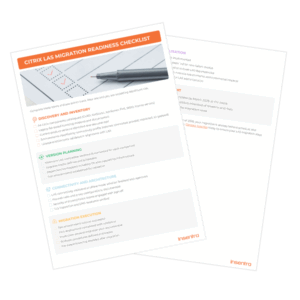In today’s rapidly evolving digital landscape, understanding financial operations within the context of cloud computing is crucial. You want to strike the balance between cost efficiency and effective cloud utilisation to ensure your business’s bottom line. This is where FinOps, or financial operations, comes in.
In this blog, we’ll delve into the concept of FinOps, its significance in cloud spending, particularly in Azure, and how it transforms traditional IT financial management.
CAPEX
Traditionally, IT infrastructure was managed through a capital expenditure (CapEx) model. CapEx is money invested by a company to acquire or upgrade fixed, physical or non-consumable assets.
Business units would request resources, which would then be procured by a central finance team. This process was slow but provided clear visibility and control over spending. Costs were fixed and predictable, with assets being used over several years and depreciating accordingly.
OPEX
The shift to the cloud has transformed this model into an operational expenditure (OpEx) approach. Resources are now consumed on a pay-as-you-go basis, making costs variable and highly flexible. This decentralisation allows business units to provision resources directly, bypassing the traditional finance control, leading to faster and more dynamic resource allocation. However, this also introduces challenges in tracking and managing expenses effectively.
FINOPS
FinOps addresses these challenges by bringing accountability and visibility to cloud spending. It ensures that consumption-based billing doesn’t lead to financial chaos. By implementing guardrails and policies, FinOps aligns financial management with cloud operations, much like governance policies control IT resource allocation.
WHAT IS FINOPS?
FinOps is not merely about cost optimisation, though it includes elements of that. It encompasses people, processes and tools to bring together stakeholders from business, technical and finance departments. The aim is to foster collaboration, ensure transparency and drive accountability in cloud spending.
THE FINOPS FRAMEWORK
ACCOUNTABILITY
Central to FinOps is the concept of accountability. Understanding what is spent, why it is spent and the value derived from that expenditure is crucial. Accountability involves tracking resource ownership, usage and the associated revenue to determine the value of the spend.
BUSINESS GROWTH AND VALUE
FinOps is not just about saving money but about driving business growth. Spending is justified if it leads to higher revenue. For instance, if every dollar spent results in ten dollars of revenue, the expenditure is valuable. Therefore, understanding the value of each dollar spent is a key goal of FinOps.
VISIBILITY AND ACCOUNTABILITY
Achieving visibility and accountability involves making spending data available in near real-time to all stakeholders. This requires robust tools and processes to track and analyse expenses. Azure Cost Management, for example, provides detailed insights into spending, allowing for effective tracking and analysis.
STRUCTURE AND TAGS
A well-defined structure and tagging system in Azure are essential for effective FinOps. This includes organising resources within management groups, subscriptions and resource groups and tagging them appropriately. Tags like business unit, cost centre and project help in categorising and tracking resources.
MANAGEMENT GROUPS, SUBSCRIPTIONS AND RESOURCE GROUPS
Azure’s hierarchical structure—management groups, subscriptions and resource groups—facilitates organised resource management. Each level can have policies and role-based access controls applied, enabling better cost tracking and management.
TAGS TO USE
Effective tagging involves using metadata to categorise resources. Common tags include business unit, cost centre, project, application and owner. These tags aid in filtering and grouping resources for better visibility and accountability.
AZURE POLICY
Enforcing tagging and resource management policies is critical. Azure Policy helps automate and enforce these practices, ensuring that resources are properly tagged and managed. Policies can audit, enforce and remediate tagging practices, ensuring compliance and facilitating accountability.
UNDERSTANDING THE VALUE OF FINOPS
Ultimately, FinOps aims to link expenditures to business value. By combining cost data with revenue data, organisations can determine the true value of their cloud spending. This holistic view enables informed decision-making and drives financial accountability.
CONCLUSION
FinOps transforms cloud financial management by bringing visibility, accountability and value tracking to cloud spending. By leveraging tools like Azure Cost Management and enforcing structured policies and tagging, organisations can effectively manage their cloud expenditures, ensuring they drive business growth and value.
If you need assistance with your cloud financial management, feel free to explore our Azure FinOps services or contact us to book a consultation.











